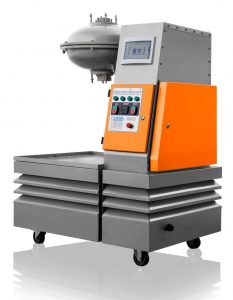Chemical Purification of Wastewater. Water going into the sewage system must be processed to remove heavy metals and other hazardous contaminants. This purification requires a complex of measures.
Wastewater can be classified by origin:
- industrial;
- household;
- precipitation (snow, ice etc).
Chemical purification of wastewater implies the use of special reagents which react the contaminants. Such reagents are chlorine, potassium permanganate, chlorine and sulfur acid, sodium hydroxide, ozone, lime etc.
Chemical purification often precedes biological purification. Let us look at chemical wastewater purification in mode detail.
Neutralization of wastewater implies bringing pH of the wastewater to 6.5-8.5. In practice this may be achieved by mixing acidic and basic wastewater, chemical introduction and filtration. Acidic water can absorb ammonia, basic wastewater can dissolve gases.
Oxidation is used for decontamination when removal of contaminants is not required. Some of the oxidants used are chlorine dioxide, calcium chloride, air oxygen, ozone and other substances.
The oxidation process make the wastewater less contaminated and allows to remove toxic substances. The most efficient oxidant is fluorude. However, this substance is rather aggressive, making it hard to use in large quantities. So in many cases chlorine is prefered as a means to remove hydrogen sulfide, cyanides, methyl-sulfuric compounds etc.
Electrolysis is the oxidation of wastewater by electrochemical methods. The latter are efficient in purification of wastewater, removing organic and inorganic substances.
Even when using well-known and proven methods, several problems remain: long duration of the process, large footprint required, high chemical consumption. Hence the need to improve process efficiency.
 GlobeCore offers a solution: installation of vortex layer device into the water treatment systems.
GlobeCore offers a solution: installation of vortex layer device into the water treatment systems.
The ferromagnetic particles located in the chamber of the AVS unit, intensively stir and mix the reagents in the chamber. Under the influence of the shocks and friction, the materials are broken down into colloidal particle sizes. The colloidal metal is good reduction agent. At the same time, electrolysis causes formation of hydrogen in the vortex layer. Both factors have significant influence on reduction of hexavalent chrome and other metals in wastewater. This ability of the vortex layer allows to reduce iron sulfide consumption, or even achieve complete reduction of hexavalent chrome due to colloid metal and hydrogen only. The process in the AVS occurs in fractions of second, making the process continuous. Intensive mixing of reagents and the influence of the EM field, as well as the dispersion of the product compounds causes the formed metal hydroxides to be more dispersed than materials obtained in mechanical agitators. Interestingly, increased dispersion of the sediment does not slow the process of settling. On the contrary, sedimentation of the solid particles after the AVS process occurs up to two times faster than in a mechanical agitator. This is due to the intensive magnetic influence on the suspension, which changes the interfacial tension on phase boundary.
An important feature of the vortex layer is the fact that after the processing, the chemical and physical properties change, which in turn changes the chemical activity of the resulting product.
Using a unit with mechanical agitators requires a lot of space and investment. The duration of a purification cycle in this method can be 30 to 120 minutes. A system based on the AVS vortex layer device to decontaminate wastewater by reducing chrome with chemical reduction agent in basic media and precipitation of the contaminants as metal hydroxides only includes vessels for iron sulfide and lime milk with portioning devices, the AVS vortex layer device and a filter or solid waste settling tank.
